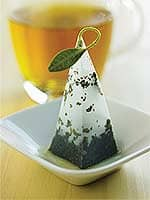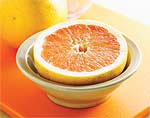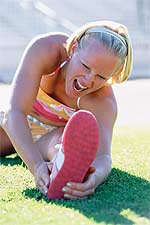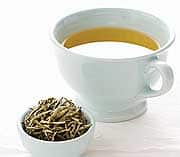Life Extension Magazine®
Vitamin C Protects Against Tumors in Rodent Model of Breast Cancer |
|
In the July, 2009 issue of the journal Carcinogenesis, researchers at Columbia University report the discovery of a protective property for vitamin C against estrogen-induced breast tumors in an estrogen-dependent breast tumor-sensitive strain of rats.* The researchers divided the animals to receive a control substance, the estrogen 17-beta-estradiol (E2), vitamin C, the estrogen metabolic inhibitor alpha-napthoflavone, E2 plus vitamin C, or E2 plus alpha-napthoflavone. While no mammary tumors were found in the groups that did not receive estradiol, 82% of the rats that received estradiol alone developed mammary tumors after 240 days. In animals that received estradiol and vitamin C, mammary tumor incidence was reduced to 29%. Alpha-napthoflavone completely prevented tumors in rats that received estradiol. Alpha-napthoflavone and vitamin C were also found to lower oxidative stress. “These results suggest that E2 metabolism and oxidant stress are critically involved in estrogen-induced breast carcinogenesis,” the authors conclude.
—Dayna Dye |
|
| Reference | |
|
* Carcinogenesis. 2009 Jul;30(7).. |
|
Stem Cells Grown on Contact Lenses Treat Blinding Disease |
|
|
For the first time, stem cells from the eye have been grown in culture on contact lenses and used to restore sight in patients with limbal stem-cell deficiency (LSCD), according to an Australian study.* LSCD, the depletion of stem cells in an area of the cornea, can result in pain and blindness. Up to now, LSCD had been treated with grafts from relatives or cadavers, which carry the risk of rejection. Three patients with LSCD due to genetic disease or ocular melanoma underwent biopsy of the eye to harvest healthy epithelial tissue rich in stem cells. Cells were grown in culture in the patient’s own serum directly on a therapeutic contact lens for 10 days and then inserted on the eye. Each transplanted lens restored healthy corneal epithelium, reduced pain, and improved vision when measured at 8 to 13 months. This simple procedure obviates the need for foreign tissue. —Laura J. Ninger, ELS |
|
| Reference | |
|
* Transplantation. 2009 May 27;87(10):1571-8. |
|
Tart Cherry Juice Relieves Exercise Pain |
|
Tart cherry juice relieved pain after exercise among both healthy runners and patients with fibromyalgia, according to two presentations at the 2009 Annual Meeting of the American College of Sports Medicine.1,2 Cherries are known to have antioxidant and anti-inflammatory effects. In the first study, 52 healthy runners aged 18 to 50 years participating in a 192-mile race were randomly assigned to drink either cherry juice or placebo twice a day for one week before the race.1 After the race, runners in the cherry-juice group reported significantly less muscle pain than those who took placebo. In the second report, 14 middle-aged women with fibromyalgia (a chronic pain disorder) were randomly assigned to drink either tart cherry juice or matching placebo for 10 days to evaluate the effects on strength and pain after arm exercise.2 Women who drank cherry juice had significantly better muscle strength and a trend toward less pain than in controls. —Laura J. Ninger, ELS |
|
| Reference | |
|
1. American College of Sports Medicine Annual Meeting, May 27-30, 2009; Seattle, Washington. Abstract 851. |
|
Vitamin K2 Improves Bone Health in Children |
|
Supplementation with vitamin K2 improved osteocalcin levels in a group of young children, report investigators from the Netherlands.* Osteocalcin is a protein needed for incorporating calcium into bone. In this study, 55 healthy children aged 6 to 10 years were randomly assigned to take vitamin K2 (as menaquinone-7), 45 μg/day, or matching placebo for 8 weeks. Effects on bone were determined by levels of carboxylated (i.e., activated) osteocalcin. After 8 weeks of vitamin K2 treatment, blood levels of carboxylated osteocalcin and vitamin K2 rose, while measures of undercarboxylated (i.e., inactive) osteocalcin decreased. The ratio of undercarboxylated to carboxylated osteocalcin, an indicator of vitamin K status, also improved significantly. No changes occurred in the placebo group. Vitamin K2 supplementation had no adverse effects on blood clotting. The currently recommended intake of vitamin K for children is 30 to 75 μg/day in the United States. —Laura J. Ninger, ELS |
|
| Reference | |
|
* Br J Nutr. 2009 May 19:1-8. |
|
Herbal Therapy Helps Forestall Prostate Cancer |
|
|
An herbal supplement (Zyflamend)® administered to men with a high risk of prostate cancer safely decreased several measures of disease, according to a recent safety and tolerability study.* Zyflamend® is an herbal preparation consisting of holy basil, turmeric, ginger, green tea, rosemary, oregano, and other herbs. This study included 23 men (average age 64 years) with high-grade prostatic intraepithelial neoplasia, a precursor to prostate cancer. The men took Zyflamend® along with various dietary supplements and were monitored periodically for 18 months. The supplement proved both safe and well tolerated, with no serious adverse events. Zyflamend® achieved a 25% to 50% decrease in prostate-specific antigen (a marker of prostate cancer) in 48% of the men by 18 months. At the same time, biopsy showed no disease in 60% of the men, intraepithelial neoplasia in 27%, and early prostate cancer in only 13%. Markers of inflammation were significantly decreased. —Laura J. Ninger, ELS |
|
| Reference | |
|
* J Soc Integr Oncol. 2009 Spring;7(2):43-51. |
|
Upcoming Conference on Science-Based Medicine |
|
On October 3-4, 2009, Life Extension® will be co-sponsoring the 2nd Annual Symposium on Science-Based Medicine. This CME-accredited symposium entitled “Yes, We Can…Think Outside the Box,” will be presented by the Robert Fishman Institute and will feature a range of hot topics in nutrition and medicine, including the following: Let Your Food Be Your Medicine and Your Medicine Be Your Food – An examination of various studies on the components of foods such as fatty acids, antioxidants, and other compounds for healing and preventing disease. Vitamin D…The Little-Known Hormone that May Save Your Life – Clinical pearls and common pitfalls to help you and your patients successfully use this amazing vitamin. Dosing, testing, vitamin D forms, and blood target ranges will also be presented. Deadly Connections: Testosterone Deficiency and Metabolic Disease Risk – A review of scientific findings on testosterone and its metabolism along with an examination of risks and benefits associated with testosterone replacement. Hormone Balancing in Women – For the past 20 years, Dr. Robert Fishman has developed an individualized approach to help women overcome hormone and nutritional imbalances. This presentation will look at different types of hormone testing and various prescription and non-prescription products for disorders caused by hormonal imbalances. Mood Therapies/Chronic Fatigue Syndrome – Personalized plans based on amino acids and organic acids. Obesity and GI Disorders – Personalized plans created from DNA-based stool profiles and urinary microbial markers. Hormone Replacement by the Book – A discussion of the pros and cons of blood, saliva, and urine measurement of hormones and how physicians can make logical decisions concerning restoration of hormone balance. The topics will be delivered by a range of eminent speakers including: Robert Fishman, PD |
|
| Reference | |
|
For further information, please call toll-free 1-866-598-6752 |
|
Highlights from the XV International Symposium on Atherosclerosis |
|
The 15th Symposium, held this past June in Boston, Massachusetts, brought scientists from around the world together to discuss detection, prevention, and treatment of atherosclerosis. Talks and presentations also touched upon the pathogenesis and biology of atherosclerosis, as well as lifestyle choices and drug therapies that may prevent it from developing in the first place. Topics of particular interest to LEF members are below: The Efficacy of StatinsAccording to a talk given by a Dr. Kastelein from the Netherlands, “Statin treatment markedly improves outcomes of hypercholesterolemia and dyslipidemia patients by lowering their plasma levels of low-density lipid cholesterol (LDL-C), thereby reducing the frequency of primary and secondary cardiovascular (CV) events.” However he also made it clear that “…despite coronary heart disease (CHD) morbidity and mortality being significantly reduced following treatment with these drugs, it is not eliminated completely.” Therefore, it’s clear that statin drugs are not a cure-all for this disease, and unless combined with lifestyle changes, such as nutrition and exercise—and possibly nutritional supplementation—these and other drugs may not prevent cardio vascular disease when used alone. DHEA levels predict death from CVD in older menA Dr. Ohlsson from the University of Gothenburg presented some very important data that found levels of DHEA and DHEA-s in older men strongly predicted death by cardiovascular disease (CVD). His group looked at 2,639 men with a mean age of 75 years. Tracking these men for 4.5 years, they found 328 deaths had occurred with the lowest levels of DHEA and DHEA-s correlating strongly with those deaths. Most importantly, they found “The association between low DHEA and CVD death remained significant after adjustment for smoking, body mass index, diabetes and hypertension.” This study found low serum levels of DHEA predict death from cardiovascular disease in older men. Coenzyme Q10 Studies – Alone or with Statin DrugsThis conference saw a large number of studies looking at the effects of CoQ10 either alone or in conjunction with statin drugs. Most of the focus was on CoQ10’s ability to counter the well-established drop in CoQ10 tissue levels in those taking statin drugs. One study presented was of particular importance in that it showed the addition of CoQ10 can greatly reduce statin-associated myopathy, which can cause pain, weakness, and tiredness as well as other symptoms in those using statin drugs. Niacin and Statin Drug TherapyAnother nutrient to get a great deal of attention at this conference—either alone or in conjunction with statin drug therapy—was the vitamin niacin (vitamin B3). The benefit of niacin therapy on blood lipids has been covered extensively over the years in the pages of Life Extension® magazine. This conference further confirmed niacin as a therapy for preventing CVD. Several studies presented showed that both alone and in combination with statin drugs, niacin raises HDL, lowers plasma triglyceride (TG) levels, as well as having other beneficial effects on CVD risk factors. This conference had various studies looking at timed released niacin as one way to improve efficacy and reduce side effects. —Will Brink |
|
| Reference | |
|
Will Brink is a health, fitness, and longevity author, and owns the popular web site www.BrinkZone.com |











